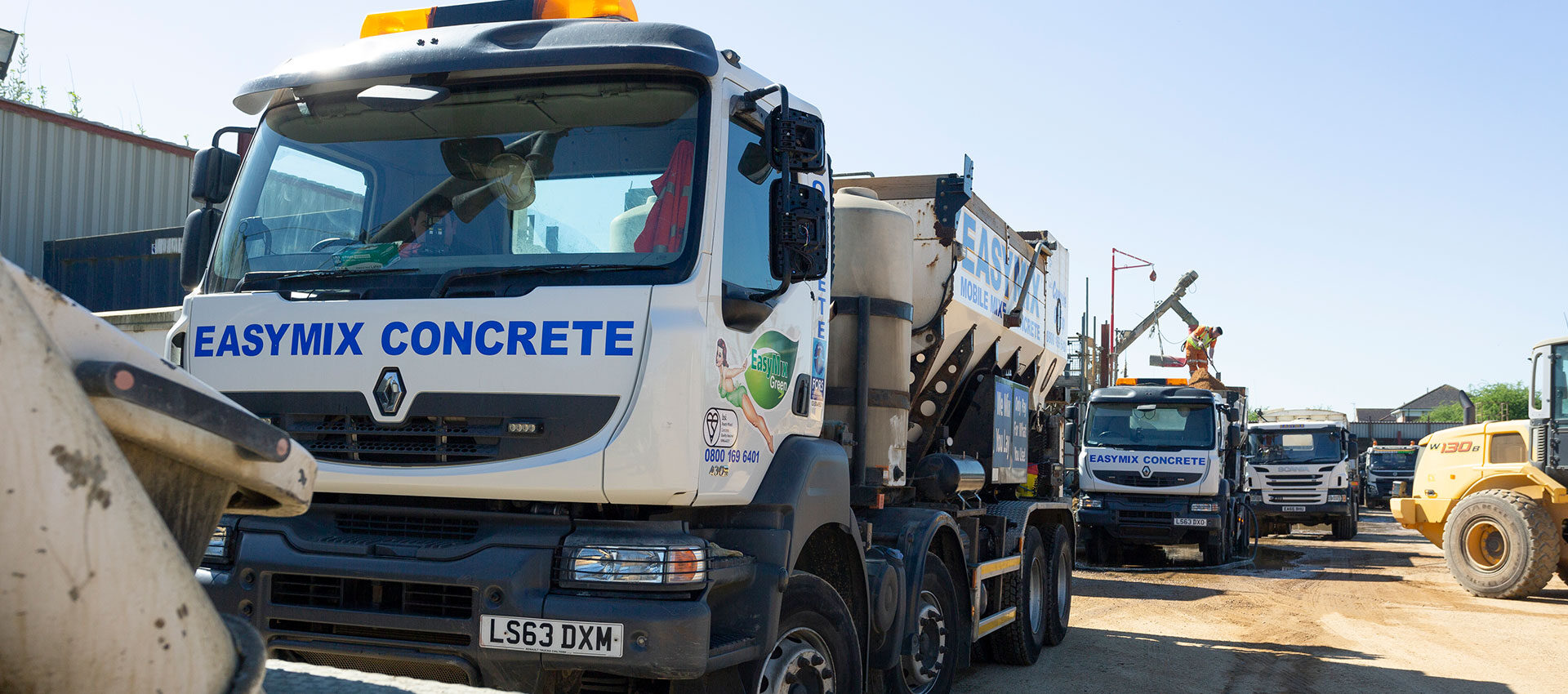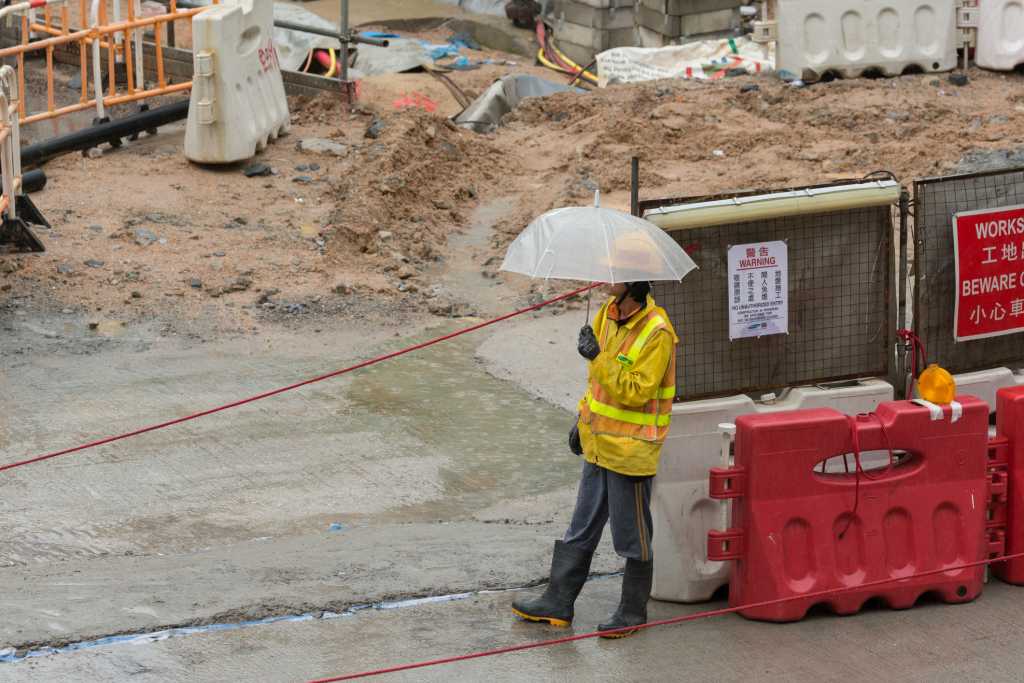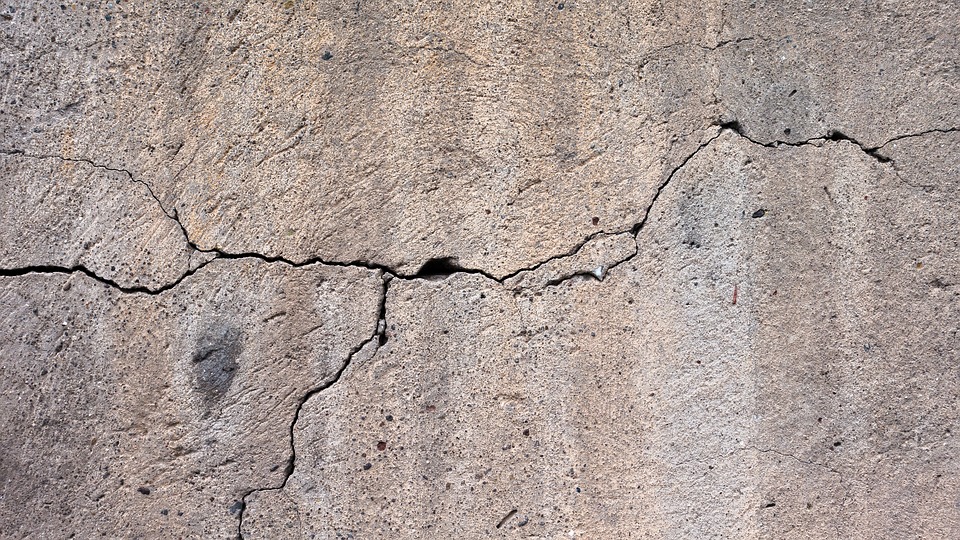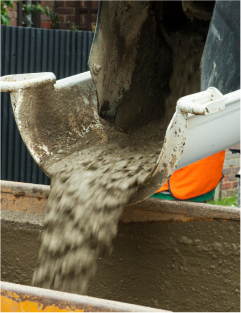
CAN YOU LAY CONCRETE IN THE RAIN?
It’s well-known that a key component of concrete is water – so surely pouring concrete in the rain shouldn’t be a problem? In actuality, it’s more of an issue than we might think, as the rainy weather can compromise the strength and final finish of the concrete.
But sometimes wet weather is simply unavoidable, so in this article, we’ll cover the effect rain has on concrete and how you can minimise the damage it causes when a downpour does strike.

What effect does rain have on concrete?
Concrete is a carefully measured mix of cement, water and aggregates. The addition of rainwater can alter this ratio in a detrimental way, and negatively affect the final product’s strength and durability. Ultimately, rain can ‘water down’ and therefore weaken the concrete mixture, making it less useful in your project. This can also lead to cracking, dusting, scaling and streaking, which can cause structural and aesthetic damage.
Signs the concrete has been damaged

So, how can you tell if your concrete has suffered due to rainy conditions?
- Dusting:The surface of the concrete is dusty or powdery, and occurs when the concrete is not strong enough.
- Scaling: A flaking or peeling of the concrete layer, and may happen primarily during freeze and thaw cycles.
- Cracking: When excess water evaporates, this can lead to shrinkage and cracking of the concrete.
- Streaking: If your concrete is coloured, the excess water causes the colour to streak or run.
Tips for how to lay concrete in the rain
As the weather is highly changeable in the UK, dry conditions cannot always be guaranteed, and so you need to know what to do if the heavens open on your freshly laid concrete. Once the concrete has set, the rainwater will be able to do no more damage. So, how can we lay concrete when it’s raining and protect curing concrete from the rain?
Check the weather forecast
This may seem like an obvious tip, but having the forethought to check the local weather forecast can give you the flexibility to adjust the time or day of your concrete pour. Of course, the weather forecast is never 100% accurate, but it can still help with getting a sense of whether a rainy spell is on its way.
Scout out gutters, downspouts and cavities
When it rains heavily, water may gush out of the downspouts and onto the wet concrete – causing damage. Pinpointing exactly where these are located on a site before commencing a job will allow you to prepare in advance. Also check for cavities where rainwater can collect, being sure to clear these of water or covering them to prevent pooling.
Have a plastic sheet on hand
Regardless of whether rain is predicted or not, it’s wise to have a plastic sheet or tarp on standby, ready to roll out if bad weather does strike. Remember to seal off the edges well to prevent water from seeping in.
It depends on the stage
If the concrete is freshly laid and the rain sets in, using a plastic sheet like described is the best way to protect it against the downpour. If the concrete is a little further along the curing process, say around 4 hours and above after pouring, the rain will have less effect.
Don’t spread dry concrete onto the rainwater
If rain has caused a wet surface or ponding to occur, never lay dry concrete on top. Some people may think that adding excess concrete or working the rainwater into the concrete may act to soak up the water, but this simply isn’t true and can cause you issues.
Wipe away excess water
Perhaps you’re too slow with getting the plastic sheet out? Don’t fret, all you need to do is erect the cover when you can and wait for the rain to stop. Then, using something thin like a broom handle or hosepipe, push the excess water off the surface of the concrete. As previously mentioned, never mix the rainwater into the curing concrete.
Seeking a professional concrete supply and mixing service? Here at EasyMix Concrete, we offer same- and next-day delivery of ready mixed and on-site mixed concrete, created to your exact specifications to suit any application. We only charge for what you use, making us a reliable and cost-effective option.
Contact us today – we serve Greater London, Hertfordshire and beyond.
Call us on 0800 169 6401
Locate your nearest branch
Find out if we deliver concrete to your area
Concrete Calculator
Calculate how much you will need
fast, reliable delivery!

This website uses cookies to enhance your browsing experience and deliver personalised ads. By clicking “Accept All Cookies”, you agree to the storing of cookies on your device to enhance site navigation, analyse site usage, and assist in our marketing efforts.


